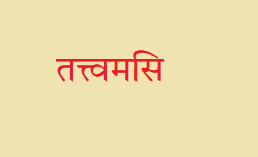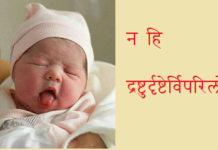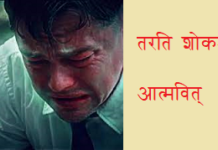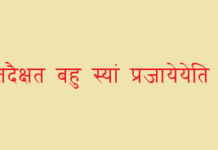What is meaning of Vedanta Shruti “तत्र को मोहः कः शोक” ?
तत्र को मोहः कः शोक एकत्वमनुपश्यतः
This statement has been mentioned in Isha Upanishad verse 7
Why it is important to know “Atman” before going from world ?
इह चेदवेदीदथ सत्यमस्ति
This statement is highlighted by "Kenopanishad", that a man should understand...
Importance of experience highlighted by Keno Upanishad
Importance of Experience
As highlighted in these two verses of Keno Upanishad, knowledge or scriptures can act as enabler...
What is meaning of Vedanta statement “कस्मिन् विज्ञाते सर्वमिदं विज्ञातं भवतीति”?
Rishi Shaunaka question to Angiras
According to Mundkopanishad 1.1.3 , the rishi Shaunaka (शौनक) went to rishi Angiras (अङ्गिरस) to learn...
Dialogue between Gargi and Yajnavalkya
Gargi and Yajnavalkya
In Brihadaranyaka Upanishad 3:8 , the dialogue between Gargi and Yajnavalkya are mentioned.
What is the meaning of Brihadaranyaka Shruti “न हि द्रष्टुर्दृष्टेर्विपरिलोपो विद्यते”?
Seer's sight never cease
The Shruti statement is mentioned in Brihadaranyaka Upanishad 4.3.23
According to Vedanta, what causes a person to wake up from Sushupti state?
Do we have to see different states ? Do they occur in a sequence first Jagrat, than Swapan and than Sushupti...
What is the meaning of Chandogya Shruti – ” येनाश्रुतं श्रुतं भवति” ?
येनाश्रुतं श्रुतं भवति
The Shruti statement is mentioned in Chandogya Upanishad 6.1.3
When Shvetaketu (श्वेतकेतु) is returned...
Narada and Sanatkumara Story – Importance of Self Knowledge
In Chandogya Upanishad Chapter 7 , there is a story of Narada and Sanatkumara highlighting the importance of...
What is the meaning of Chandogya Upanishad Shruti – “तदैक्षत बहु स्यां प्रजायेयेति”?
तदैक्षत बहु स्यां प्रजायेयेति
The Shruti statement is mentioned in Chandogya Upanishad 6.2.3













